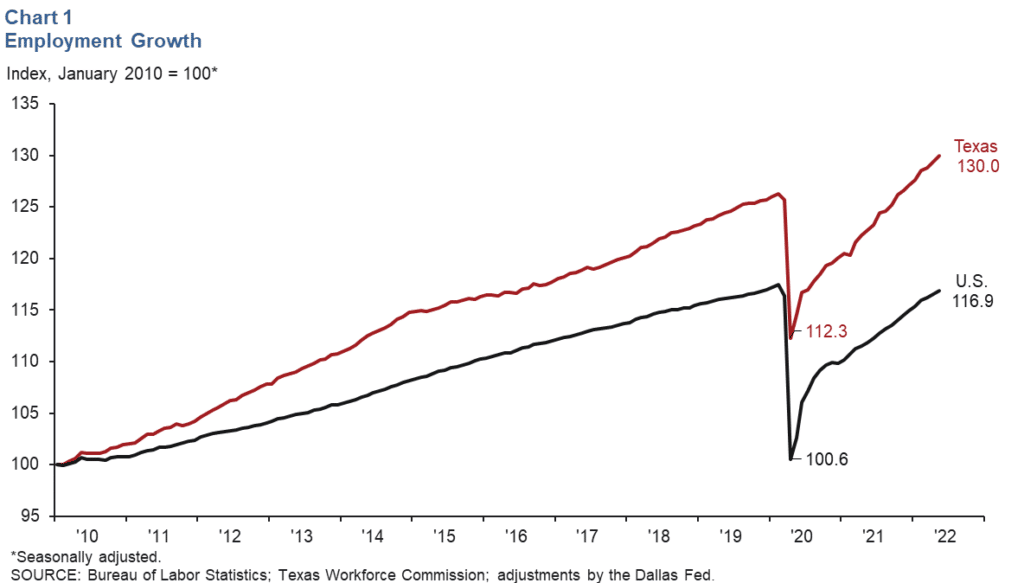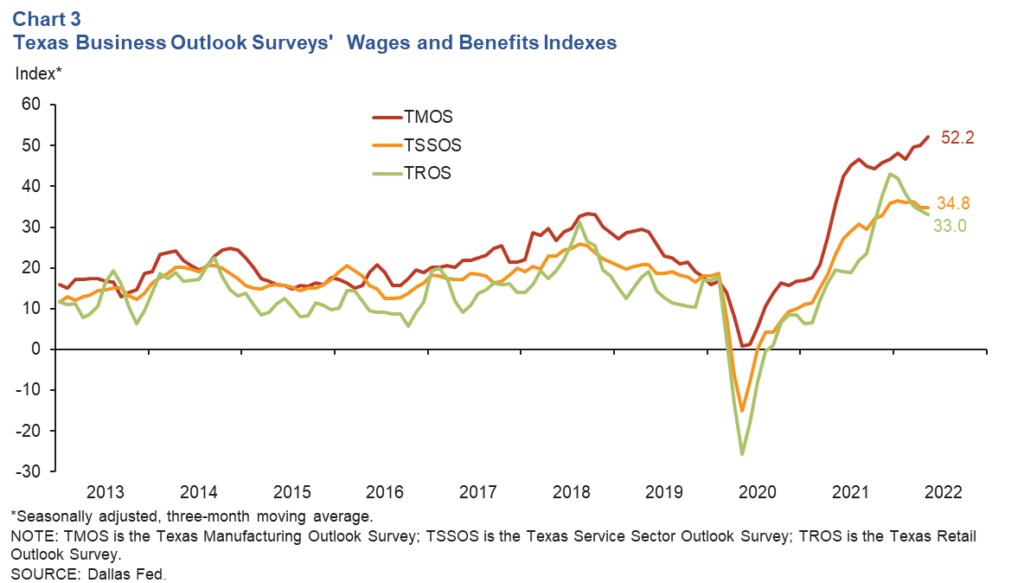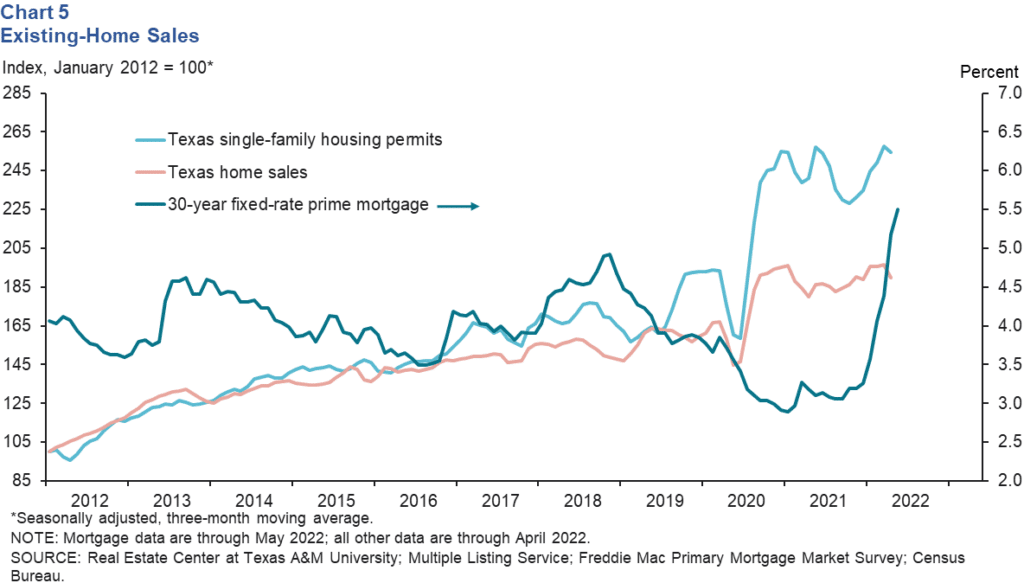Texas Economic Indicators

from the Federal Reserve Bank of Dallas
Payroll employment increased statewide and in most Texas major metros in the first part of the year, and Texas Business Outlook Surveys indicated that wage growth remained highly elevated in the manufacturing and service sectors. Here is a closer look at these and several other economic indicators.
Labor Market
Employment Growth Increases
Texas employment expanded an annualized 6.2 percent (66,360 jobs) in May after growing a downwardly revised 5.2 percent in April (Chart 1). Job gains accelerated in most major sectors, with construction posting the fastest employment growth. In May, Texas payroll employment was up 2.9 percent from prepandemic levels, while the U.S. remained 0.5 percent below those levels. The Dallas Fed’s Texas Employment Forecast is for 4.0 percent job growth this year (December/December).

Payrolls Expand in Most Major Metros
May employment growth showed solid gains across the major Texas metros, except for El Paso (Chart 2). Fort Worth led job growth, with payrolls increasing an annualized 9.0 percent. Dallas followed closely, posting an annualized 8.0 percent job growth. Payrolls climbed an annualized 7.6 percent in Houston, 5.5 percent in San Antonio, 5.2 percent in McAllen and 2.6 percent in Austin. Employment fell in El Paso by 2.2 percent but was up compared with December 2021 levels.

Texas Business Outlook Surveys
The Texas Business Outlook Surveys indicate that wage growth remained elevated (Chart 3). In May, the three-month moving average of the manufacturing survey’s wages and benefits index moved up from 50.0 to 52.2. The service sector wages and benefits index remained relatively flat at 34.8, based on a three-month moving average. Wage pressures eased in the retail sector as the index dipped from 34.3 to 33.0.

Housing
Texas existing-home sales were flat in April, and the three-month moving average dipped (Chart 4). Sales totaled nearly 35,000 homes in April, little changed from March’s figure and up 1.1 percent year over year. Rising mortgage rates and record-high prices have slowed home sales. Mortgage rates have increased by more than 200 basis points since the beginning of the year and are at their highest level since January 2009. Meanwhile, single-family housing permits fell 1.1 percent in April.

Subscribe to Texas Economic Indicators and other reports from the Dallas Fed at dallasfed.org/pubs/e-sub.


